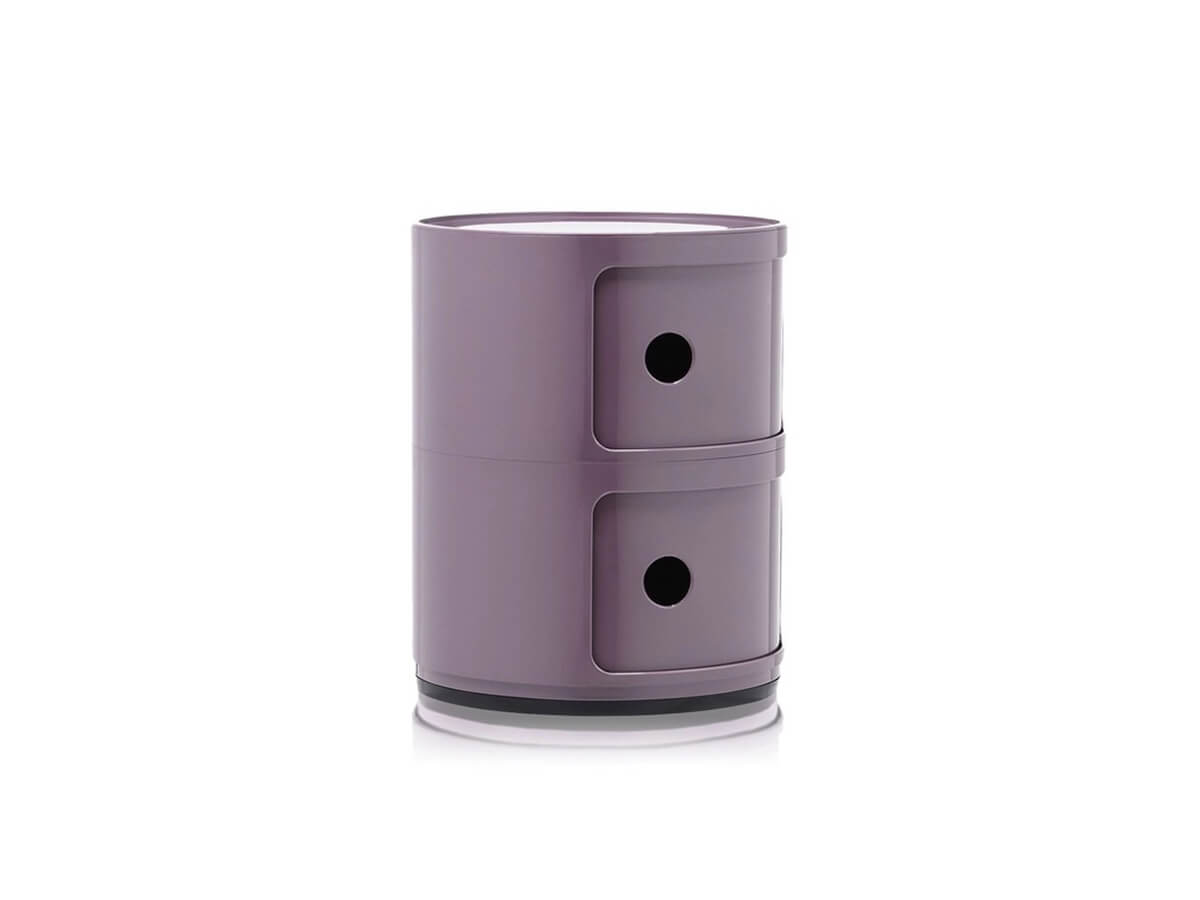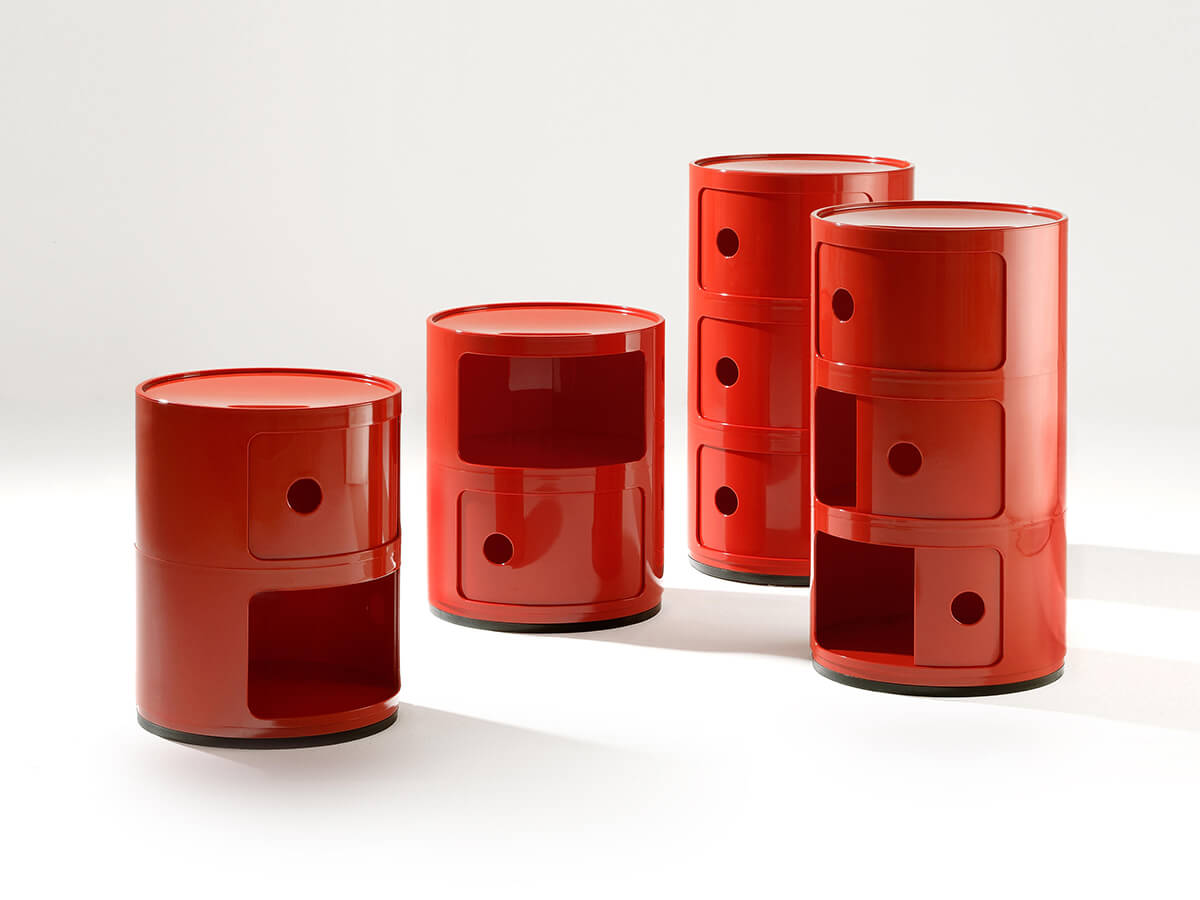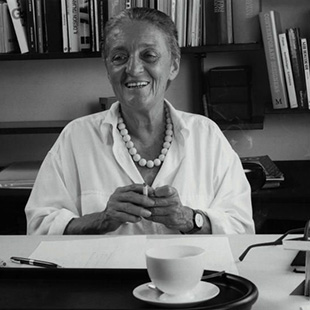Kartell
Componibili Storage Unit
Classic
Price starting from € 110,00*
*Price valid for the classic version in H.40 cm with frame in coloured ABS in purple colour (cod. 4966).
The extremely versatile Componibili by Kartell are one of the company's most iconic products and have survived over half a century of design unscathed while still maintaining their freshness intact. Designed in 1969 by Anna Castelli Ferrieri, they consist of a plastic cylinder closed by one or more semicircular doors that can also be opened with a single finger, now available in fixed versions with two, three or four overlapping elements. Practical and economical, they can be used in any environment: in the bedroom, the low version is perfect for taking on the functions of a bedside table, while in the children's bedroom, Componibili becomes a stylistically impeccable cabinet to store toys. In the kitchen, in the bathroom, in the office: Componibili is the ideal piece of furniture for tidying up the house and storing objects of all kinds.
Ø 32 x H.40 cm
Available also in H.58,5 cm and H.77 cm
Salvioni Design Solutions delivers all around the world. The assembly service is also available by our teams of specialized workers.
Each product is tailor-made for the personal taste and indications of the customer in a customized finish and that is why the production time may vary according to the chosen product.
To discover the full range of services available, visit our delivery page.
Suggested versions (4)
Personalize your request
Colours
Select
White
Blue
Purple
Green
Red
Black
Blue
Purple
Green
Red
Black
Sizes
Select
Ø 32 x H.40 cm
Ø 32 x H.58,5 cm
Ø 32 x H.77 cm
Ø 32 x H.58,5 cm
Ø 32 x H.77 cm
Select
Color and imagination, but also an excellent technical mastery of the materials: with these weapons, Kartell has managed to make the most of a traditionally economical material such as plastic, creating products with a high design content perfect even for the most luxurious homes. Founded in 1949 by the chemical engineer Giulio Castelli, Kartell started its production with small high-level design objects, developing over time on increasingly consistent sizes and shapes, thus arriving to offer colorful and functional furnishing accessories with affordable prices to everyone.
Recognized the high potential of plastic materials and thanks to the fruitful collaboration with the architect Gino Colombini, in the following years Castelli was able to undertake a long series of experiments that led to the conquest of the first Compasso d'Oro in 1955. In those same years the lighting division was inaugurated with the first collection signed by the Castiglioni brothers.Read more
Designed by
Anna Castelli Ferrieri
Anna Castelli Ferrieri (1918-2006) was an important Italian architect and designer. Daughter of Enzo Castelli, an exponent of the Milanese intellectual bourgeoisie of the early twentieth century, Anna orients her studies towards architecture, graduating from the Polytechnic of Milan under Franco Albini. The rationalism of Albini, in whose studio she also works for a few years after graduating, is the main point of reference for her style throughout her career. As an architect she concentrates mainly on the creation of interiors, associating herself from 1959 to 1973 with Ignazio Gardella; among her most important works there are the Alfa Romeo offices in Arese and the Kartell offices in Binasco. Her career as a designer is instead strongly influenced by the profession of her husband, the chemical engineer Giulio Castelli, founder of the Kartell plastics factory: this gave Anna Castelli Ferrieri the opportunity to develop the ever new possibilities of a continuously evolving material, giving life to enormously successful creations such as the 4953-54-55-56 series of stackable containers (now marketed under the name Componibili and which have become one of the great symbols of the company) or the 4870 chairs. Starting in the 1990s she extends her activity also to other brands, collaborating for example with Sambonet, Arflex and Ycami. She won, among other things, two Compassi d'Oro (1987,1984) and a Gold Medal at the Triennale (1947).
Read more








